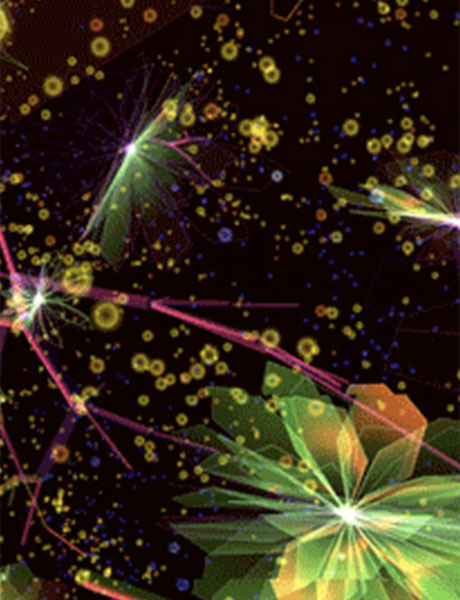September 5 — November 5, 2013
IDEA Space
Systems & Subversions features several projects that create, examine, and/or disrupt natural and artificial systems. Featuring both high-tech, digital artworks and low-tech “DIY” inspired projects, the exhibition engages issues of audience co-creation of content, participation, and interactivity. Each piece in the exhibition either creates a system in which the audience may participate, uncovers hidden systems, or actively unravels (or hacks) pre-established systems to achieve other aims. Associated programming and events addressing issues of bio-hacking and bio-ethics and the “fair use” of DNA.
Systems & Subversions is part of Cross-Creations: Gods & Monsters, a community-wide series of arts events that explore the Gods & Monsters theme from a variety of perspectives. Visit http://www.crosscreationscollab.com for a full list of exhibitions and events.
Featured Artists:
Nurit Bar-Shai is the co-founder and Arts and Culture Program Director of Genspace NYC, a citizens-science community bio-tech laboratory in Brooklyn, NY. As an artist working with biological systems, she addresses the ethics the emerging practice of DIY biology and soft-genetic manipulation.http://www.nuritbarshai.com
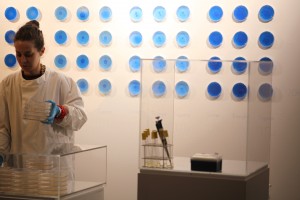
Part of her larger body of work Objectivity [tentative], that explores the intersection of art science and technology, Nurit Bar-Shai’s Sound to Shape, Soundscapes installation sets up parameters wherein live microorganisms “grow images” through interaction with variable sound frequencies. The project explores the social life of bacteria by using sound waves to visualize the “chemical tweets” of microorganisms as exceptionally beautiful and rare image patterns. Sound to Shape examines biological systems of self-organization, the immense complexity within seemingly simple structures, and the process of achieving dramatically varied results with slight alterations in initial settings.
Jon Cohrs is a visual artist based in Brooklyn, NY. Often employing humor and absurdity, his work uses public engagement and site-specific interventions to address global issues. http://www.splnlss.com
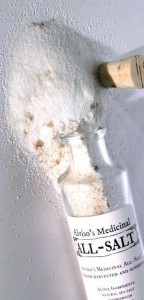
Cohrs will present a new version of Alviso’s Medicinal All-Salt, a site-specific project originally created as part of the 01SJ Biennial. Alviso’s Medicinal All-Salt is a unique low-dosage cocktail of our most commonly used drugs, all brought together in one simple salty remedy. Most of the U.S. water supply contains various pharmaceuticals from both humans and livestock. Working in collaboration with Morgan Levy, a water researcher from UC Berkeley, Cohrs distills and bottles the chemicals found in reclaimed water and bottles them to create a perfect aggregate of what America is taking to heal itself. Presented through “advertisements” that evoke modern drug ads as well as 19th century “snake oil” miracle remedies, the project presents a darkly humorous examination of the medical industrial complex, consumer behaviors, and wastewater treatment methodologies.
Scott Johnson is a sculptor, photographer and installation artist interested in the relationship between perceptual experience and the ways we map and understand space. Johnson is Associate Professor of Art at Colorado College. http://www.scjworks.com
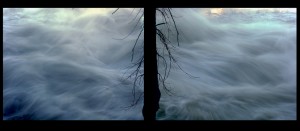
Johnson’s Systems & Subversions project examines the interaction between human behaviors/systems of belief and natural systems such as weather patterns and hive ecologies.
Graham Wakefield & Haru Ji are the creators of Artificial Nature, a trans-disciplinary research project drawing upon bio-inspired system theories and the aesthetics of computational world-making. Currently teaching Media Arts in Seoul, Korea, Wakefield and Ji are both graduates of the doctoral program in Media Arts and Technology at UC Santa Barbara. http://www.artificialnature.mat.ucsb.edu/home.html
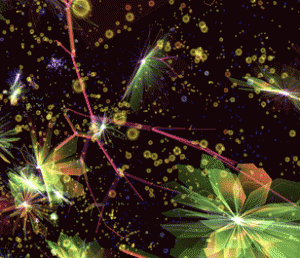
The artists will create a new iteration of Artificial Nature project for the exhibition. Artificial Nature is a programmed, self-sustaining, digital ecosystem that functions as an immersive environment. In each version of the project, the artists create design parameters in which virtual organisms consume, grow, metabolize, reproduce and respond to activities within an endless fluid environment. For Systems and Subversions, Ji and Wakefield will design an interactive digital island environment that allows audience members to alter how a virtual ecosystem “grows.”
Marina Zurkow crosses multiple disciplines with her practice, building animations and participatory environments that are centered on humans and their relationship to animals, plants and the weather. Zurkow is on faculty at NYU’s Interactive Technology Program (ITP), and lives in Brooklyn, New York. http://www.o-matic.com
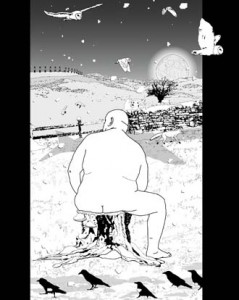
Zurkow’s Mesocosm Northumberland and Mesocosm Wink, Texas are part of an ongoing series of animated landscapes that develop and change over time in response to software-driven data inputs. The title is drawn from the field of environmental science and refers to experimental, simulated ecosystems, which allow for manipulation of the physical environment and are used for biological, community, and ecological research. Each of the works in Mesocosm is long in duration and recombines perpetually as inputs determine order, density, and interrelationships. They are looped, and have no beginning or end: every time a viewer encounters the pieces, he or she will have a different experience.
